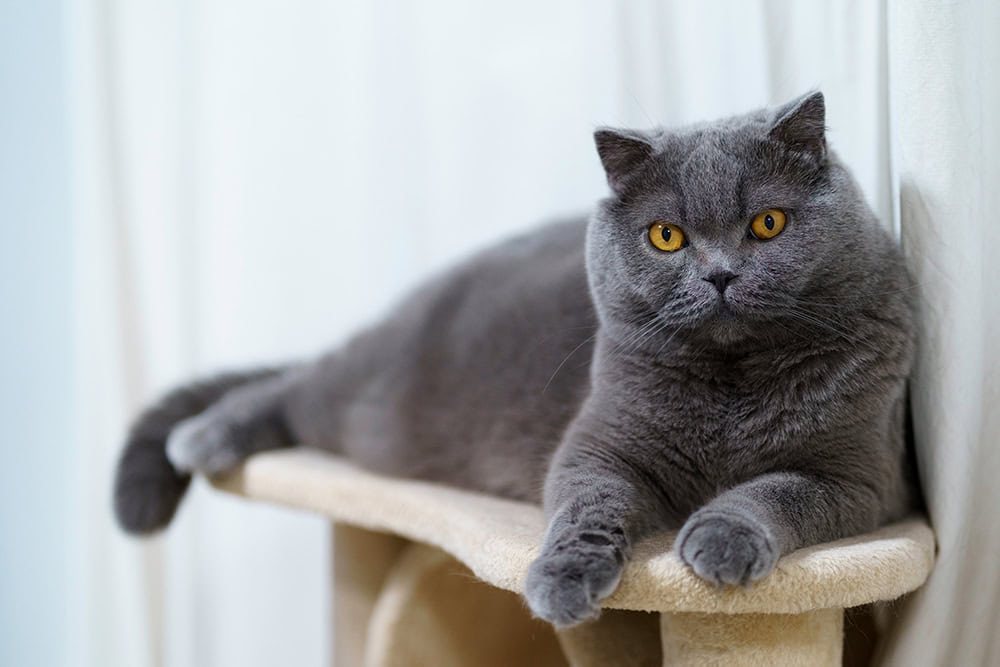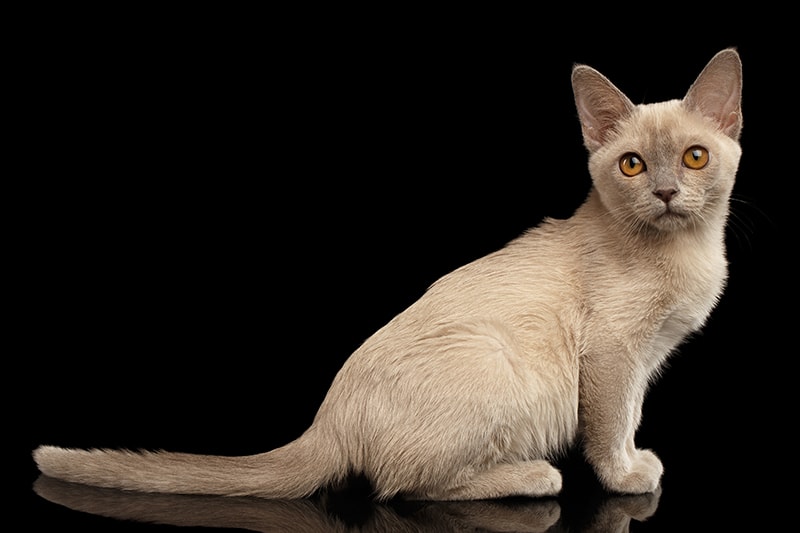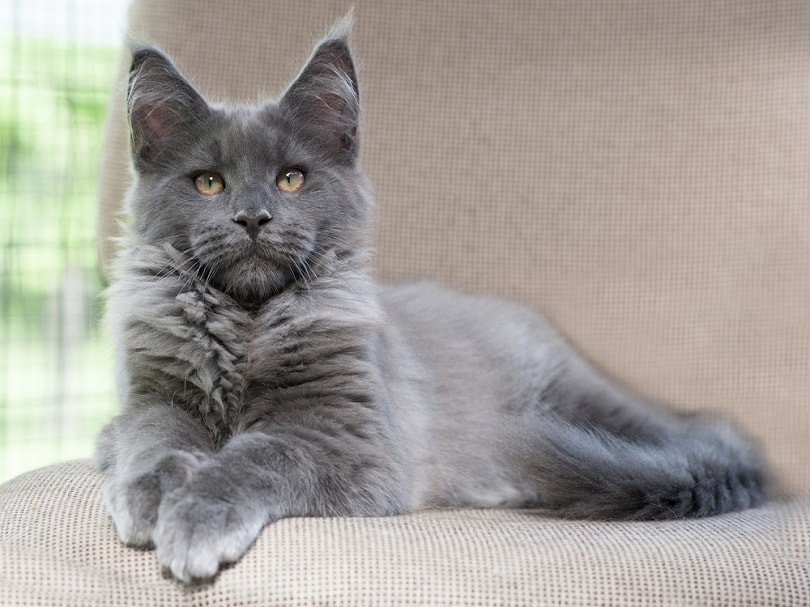How To Keep Cats From Eating Each Other’s Food: 5 Useful Tips

Updated on
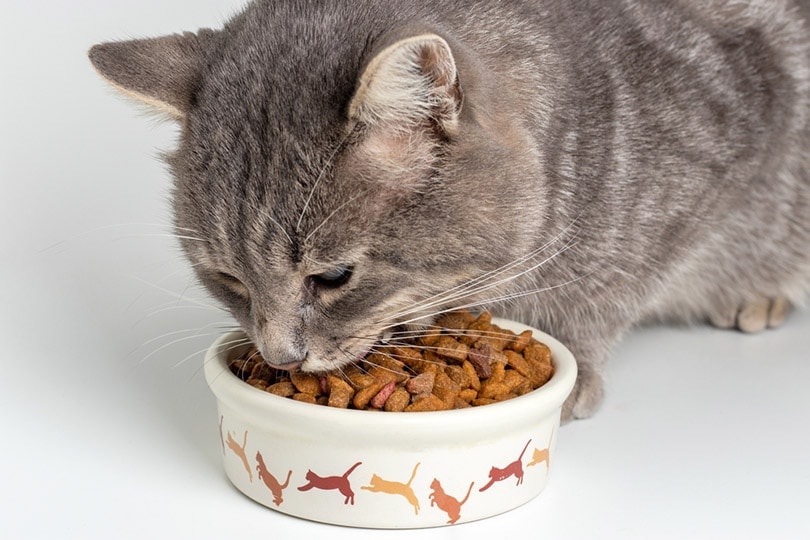
If you own multiple cats, you know it can be challenging to keep them out of each other’s food bowls. Some cats are dominant and will steal food from housemates, which can lead to malnourishment in the more submissive cats. In addition, cats stealing each other’s food can present a problem if one or more cats need special food or medication and could lead to obesity in the more dominant feline. So, how do you stop this behavior?
Here’s how to keep cats from eating each other’s food for a happy and harmonious household.
How To Keep Cats From Eating Each Other’s Food
1. Set a Feeding Schedule
Free feeding is popular with cat owners, but it’s not the ideal way to feed for multiple reasons. Filling a cat bowl and leaving it for the day not only promotes food guarding and stealing behaviors, but it makes it more difficult for you to monitor your individual cats’ intakes and health. Setting a feeding schedule solves a lot of these problems. Whether you choose to feed once, twice, or three times a day, choose a schedule and get your cats started.
They may protest at first, but over time, they’ll get used to the new schedule and only bother you at feeding time.
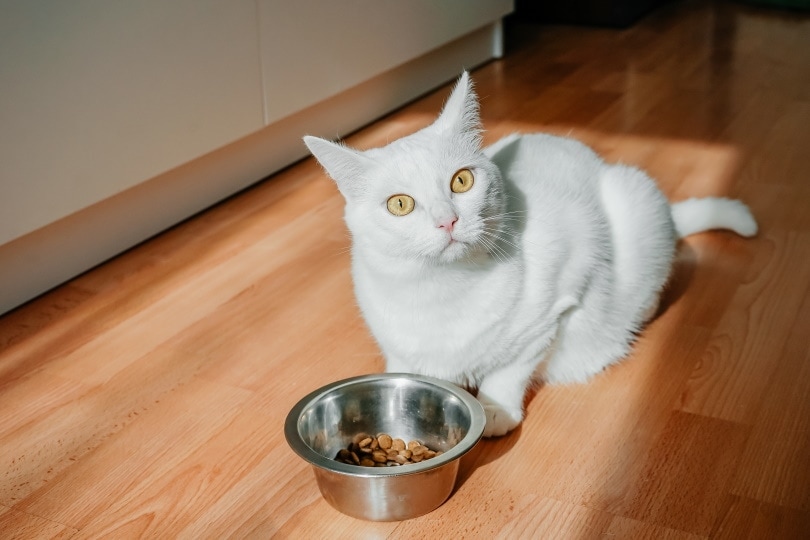
2. Separate the Cats
When you have a feeding schedule, it’s easier to keep your cats separated and monitor how much each cat is eating. If food stealing is a big problem, consider feeding your cats in separate areas. You can put the dominant cat or cats in one room with their food and keep the timid ones in another. This completely prevents them from having access to each other’s food to steal it.
You can also stay and watch them eat, but if you feel comfortable, just leave them in separate rooms for a half hour or so to finish their meals, then remove the bowls.
3. Always Remove Food Bowls
If you separate your cats, but then leave their bowls, you can encourage food stealing. Once everyone has free roam again, your dominant cats may seek out the food bowls to catch some excess food. If you allow this, it only encourages your cats to keep stealing food at any opportunity, not to mention that it can contribute to obesity. Always remove and clean food bowls when your cats are done eating.
They’ll get used to this routine, and hopefully, they’ll learn to stop seeking out excess food.
Our cats deserve the best when it comes to their food and water dishes. These essential items must be well designed with the specific needs of our felines as top priority. Our Hepper NomNom Cat Bowl is a modern, whisker-friendly option that serves as an all-in-one pet dish. The removable stainless steel bowls are shallow for optimum comfort and slide securely into a PP plastic tray with a wide lip tailored to catch any overflow. This bowl is entirely dishwasher-friendly, too, which helps with tidying up (and will keep your cat happy)!
- NO MESS - The 360° tray on this cat food and water bowl set has a raised design to catch and...
- WHISKER FRIENDLY - Shallow and wide metal containers with flat bottoms ensure your kitty can enjoy...
4. Set Some Distance
If you don’t have the space to confine your cats in separate rooms, the next best thing is to monitor their eating and keep the bowls far away from each other. Some distance will discourage your cats from trying to steal food, and if you notice a cat sneaking up to another’s bowl, you’re there to stop it. Another option is to separate the bowls by height, not floor distance. You can put some cats’ food bowls on the floor and some on a table or countertop.
You should still monitor their feeding time, but this helps in the same way as keeping the bowls far apart on the floor.
5. Feed Appropriate Portions
According to VCA Hospitals, approximately 30 to 35% of the feline population is obese, which can lead to a short lifespan, osteoarthritis, joint problems, bladder stones, heart disease, and cancer. While a lot of factors can contribute to obesity in pet cats, overfeeding is a significant cause. Cats that steal food are more likely to ingest more than their ideal portion, which can lead to obesity over time. Conversely, overweight cats stealing food robs the other cats of vital nutrients they need.
If you’re not sure how much each of your cats should eat, ask your veterinarian for recommendations based on their individual histories.
Make sure you’re feeding your cat the right amount, check out our cat food calculator here.
The exact amount of calories an individual animal needs to maintain a healthy weight is variable and influenced by many factors including genetics, age, breed, and activity level. This tool is meant to be used only as a guideline for healthy individuals and does not substitute veterinary advice
 Enjoy Stress-Free Feeding
Enjoy Stress-Free Feeding
Feeding cats can be a pain, especially if you’re switching from a free-for-all with food-stealing cats to a set schedule and separate feeding areas. Over time, your cats will adapt to the new routine, but it’s important to monitor feeding schedules and make adjustments to discourage food stealing and dominance behaviors.
Looking for more information for your multi-cat home? Try:
- 8 Best Self Cleaning Litter Boxes for Multiple Cats – Reviews & Top Picks
- 10 Best Cat Trees for Multiple Cats – Reviews & Top Picks
Featured Image Credit: Skrypnykov Dmytro, Shutterstock



 Enjoy Stress-Free Feeding
Enjoy Stress-Free Feeding